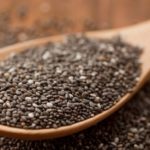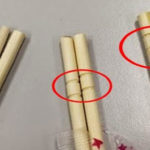Intermittent fasting, specifically the 20/4 method, has gained traction as a popular weight loss strategy. But is it effective and more importantly, safe? Let’s explore the potential risks and hear what experts have to say.
1 Potential Dangers of the 20/4 Intermittent Fasting Method
What is the 20/4 Method?
The 20/4 method involves complete abstinence from food for 20 hours daily, with a 4-hour window allowed for eating and drinking. Despite its reputation for rapid weight loss, this diet plan carries significant health risks.
 Potential Dangers of the 20/4 Intermittent Fasting Method
Potential Dangers of the 20/4 Intermittent Fasting Method
Potential Risks:
Lan Ngoc and Minh Hien, both eager to lose weight quickly, decided to try the 20/4 intermittent fasting approach. Unfortunately, instead of achieving their desired results, they encountered severe health consequences.
Lan Ngoc (30 years old, Tay Ho) experienced paleness, insomnia, and fatigue after just 4 days of following the diet. She had to be hospitalized due to health deterioration after only a week. Minh Hien (32 years old, Cau Giay) faced similar issues, including extreme hunger, exhaustion, difficulty concentrating, poor sleep quality, indigestion, and ultimately stomach pain and low blood sugar, forcing her to discontinue the diet.
Their stories serve as a cautionary tale for anyone considering the 20/4 intermittent fasting approach. Weight loss should be approached scientifically and safely.
2 Expert Warning
The 20/4 method, also known as OMAD (One Meal A Day), has become a popular trend for weight loss and health improvement. According to Dr. Phan Thai Tan, a health and weight loss coach at Homefit, OMAD is an extreme variation of intermittent fasting.
 OMAD – An Extreme Form of Intermittent Fasting
OMAD – An Extreme Form of Intermittent Fasting
Research suggests that OMAD can be effective for weight loss, improving heart health, increasing insulin sensitivity, and reducing aging and inflammation. However, Dr. Tan warns that this eating pattern is very restrictive and challenging for most people to follow.
Consuming only one meal or eating within a 4-hour window daily can lead to energy deficits and fatigue. The minimum daily energy requirement is 1,000-1,200 Kcal to maintain health, and falling below this threshold requires medical supervision.
 Lack of Proper Nutrition Leads to Fatigue
Lack of Proper Nutrition Leads to Fatigue
As Dr. Tan explains, “Overloading the digestive system with too much food in a short period can also be stressful for the body.” Prolonged fasting can result in low blood sugar, nausea, dizziness, and exhaustion.
Additionally, not consuming a balanced diet can lead to a lack of focus, drowsiness, and hair and skin issues.
Therefore, it’s crucial to consult a doctor or nutritionist before considering the 20/4 or OMAD approach to ensure safety and effectiveness.
3 Expert-Recommended Safe Weight Loss Solutions
To ensure safety and good health, experts recommend gradual adjustments and starting with more manageable methods like 12/12 (eating within a 12-hour window and fasting for the remaining 12 hours), 14/10 (a 10-hour eating window and a 14-hour fast), or the more popular 16/8 method. The goal is to ease the body and mind into the sensation of “hunger.”
 Opt for Less Harsh Dietary Approaches
Opt for Less Harsh Dietary Approaches
Additionally, you can try the 20/4 method for 1-2 days a week as a way to reset and detox, reducing bloating and improving digestion.
However, individuals with health conditions like diabetes, thyroid issues, pregnancy, breastfeeding, or eating disorders should refrain from these methods.
 Calorie Control for Effective Weight Loss
Calorie Control for Effective Weight Loss
The fundamental principle of weight loss remains calorie control, balancing protein, fats, and carbohydrates, along with regular physical activity. Adequate hydration and snacking only when advised by a doctor are also key factors.
In conclusion, while the 20/4 intermittent fasting method can lead to weight loss, it poses potential health risks. Carefully consider the pros and cons before attempting it, and closely monitor your well-being. Good luck on your journey!
Source: vnexpress.net



































